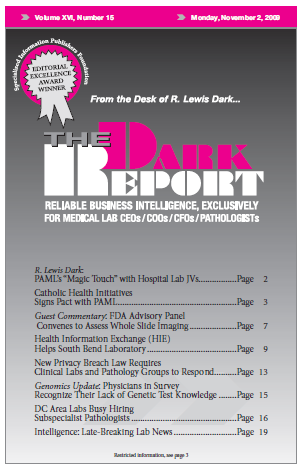CEO SUMMARY: There were plenty of headlines about the passage of HITECH last February because of how it expanded funding for electronic medical records. But lesser known are new requirements that providers, including labs and pathology groups, must now take specific compliance actions in response to breaches involving protected health information (PHI). Enforcement of these …
New Privacy Breach Law Requires Labs to Respond Read More »
To access this post, you must purchase The Dark Report.


